UC Berkeley Press Release
5 new HHMI investigators to be announced May 27
BERKELEY – Five University of California, Berkeley, faculty members have received one of the most sought-after honors in biomedical research: appointment as Howard Hughes Medical Institute (HHMI) investigators with guaranteed research support for five, 10 or more years into the future.
The five are among 56 researchers "given the opportunity to tackle their most ambitious, risky research plans," the non-profit institute announced today (Tuesday, May 27) from its headquarters in Chevy Chase, Md.. The UC Berkeley professors will join 300 other HHMI investigators, nine of them at UC Berkeley, from academic institutions around the country.
The UC Berkeley members of the new class of investigators are:
- Christopher J. Chang, assistant professor of chemistry and faculty scientist in the Chemical Sciences Division of Lawrence Berkeley National Laboratory (LBNL)
- Yang Dan, professor of molecular and cell biology
- Abby F. Dernburg, associate professor of molecular and cell biology and faculty scientist in LBNL's -Life Sciences Division
- Michael B. Eisen, associate professor of genetics, genomics and development in the Department of Molecular and Cell Biology and faculty scientist in LBNL's Genomics Division
- Jay T. Groves, associate professor of chemistry and faculty scientist in LBNL's Physical Biosciences Division
Chang, Dernburg, Eisen and Groves also are UC Berkeley faculty affiliates of the California Institute for Quantitative Biosciences (QB3), a cooperative effort among three UC campuses and private industry to apply the tools of quantitative science to understanding biological systems.
"These 56 scientists will bring new and innovative ways of thinking about biology to the HHMI community," said Thomas R. Cech, HHMI president. "They are poised to advance scientific knowledge dramatically in the coming years, and we are committed to providing them with the freedom and flexibility to do so."
The institute prides itself on taking risks on individual scientists, relying upon their innovation and daring to explore new areas, extend the boundaries of science or even change direction, no matter how long it takes to yield results. This "people, not projects" approach has proven successful: 124 investigators are members of the National Academy of Sciences and 12 have received Nobel Prizes.
The new investigators were chosen in a nationwide competition among 1,070 applicants following a 2007 announcement soliciting researchers with four to 10 years of experience as faculty members.
HHMI is a non-profit medical research organization that has invested more than $8.3 billion over the past two decades in support, training and education of the nation's most creative and promising scientists.
Researcher profiles
See below for briefs about the UC Berkeley investigators, or link to the HHMI Web site to read longer profiles of the scientists.
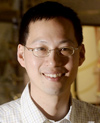 Chris Chang develops novel small molecules to probe the roles of metals and oxidation chemistry in the normal brain as well as in aging and neurodegenerative diseases such as Alzheimer's and Parkinson's. An engineer turned chemist, his laboratory creates "smart probes" to study communication in the brain, specifically the roles that metals like copper and molecules like hydrogen peroxide play.
Chris Chang develops novel small molecules to probe the roles of metals and oxidation chemistry in the normal brain as well as in aging and neurodegenerative diseases such as Alzheimer's and Parkinson's. An engineer turned chemist, his laboratory creates "smart probes" to study communication in the brain, specifically the roles that metals like copper and molecules like hydrogen peroxide play.
"As a chemist interested in complexity, I've always been fascinated by the brain, nature's most complex and beautiful system, and how it works at a molecular level," he said. More >
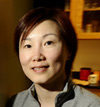 Neurobiologist Yang Dan studies how visual information is interpreted and stored by the mammalian brain and how these mechanisms are linked to learning and memory. Applying her early training in mathematics and physics, she tackles amazingly complex problems, such as how the interconnected circuits in the visual system produce images in the brain, or how they contribute to optical illusions.
Neurobiologist Yang Dan studies how visual information is interpreted and stored by the mammalian brain and how these mechanisms are linked to learning and memory. Applying her early training in mathematics and physics, she tackles amazingly complex problems, such as how the interconnected circuits in the visual system produce images in the brain, or how they contribute to optical illusions.
A native of Beijing, China, Dan continues to interact with colleagues in China and mentors students in that country. "The students are hungry for guidance. I talk to them, look at their data, and give them some suggestions. It is really rewarding," she said. More >
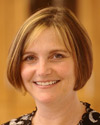 Cell biologist Abby Dernburg researches the molecular mechanisms underlying chromosome organization and dynamics during meiosis, the cell division process by which reproductive cells - egg and sperm - are created. Problems in meiosis can lead to chromosomal diseases such as Down Syndrome.
Cell biologist Abby Dernburg researches the molecular mechanisms underlying chromosome organization and dynamics during meiosis, the cell division process by which reproductive cells - egg and sperm - are created. Problems in meiosis can lead to chromosomal diseases such as Down Syndrome.
Working with the nematode C. elegans, she has found that the cellular skeleton plays a key role in the proper pairing of chromosomes before cell division. "To me, chromosomes have a lot of personality. They're where so many of the interesting transactions in the cell are happening," she said. More >
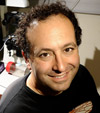 Michael Eisen applies computational and experimental genomic approaches to the study of how DNA sequences specify the form and behavior of an organism. Using fruit flies (Drosophila) as a model, he focuses on understanding how genomes specify when and where genes are turned on and off during development, and how, over the long term, changes in such regulation drive evolution.
Michael Eisen applies computational and experimental genomic approaches to the study of how DNA sequences specify the form and behavior of an organism. Using fruit flies (Drosophila) as a model, he focuses on understanding how genomes specify when and where genes are turned on and off during development, and how, over the long term, changes in such regulation drive evolution.
As part of this effort, he spearheaded the sequencing of the genomes of 12 species of fruit fly, and continues to sequence additional species. "You can think of every genome as an experiment that evolution has already done for you," he said. "Our interest in the long run is to apply what we learn in Drosophila to understanding how variation among human genomes determines each of our unique characteristics." More >
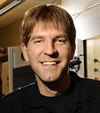 A biophysicist by training, Jay Groves is interested in how the arrangement of molecules on the surface of a cell affects communication between cells. Working with cells of the immune system, he has engineered a hybrid half-living, half-artificial cell system that allows him to manipulate the array of receptors and signaling molecules on and in the cell membrane and study the effect. This may help explain how some drugs work and also how cancer spreads.
A biophysicist by training, Jay Groves is interested in how the arrangement of molecules on the surface of a cell affects communication between cells. Working with cells of the immune system, he has engineered a hybrid half-living, half-artificial cell system that allows him to manipulate the array of receptors and signaling molecules on and in the cell membrane and study the effect. This may help explain how some drugs work and also how cancer spreads.
Groves' research ropes together tools from materials science, cell biology and physical chemistry, making for a mix of disciplines in his laboratory that "follows the natural world rather than departmental boundaries. We have a new generation of students with an interesting cross-disciplinary bilingualism in science that never existed before," he said. More >

